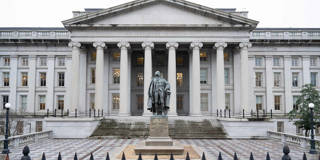We are living in a world of overlapping emergencies – climate change, a pandemic, mounting geopolitical tensions – and more shocks are sure to come. Policymakers need to be prepared to react before the next one unleashes widespread inflation once again, and interest-rate hikes are not the answer.
AMHERST – At the end of 2021, The Guardian published one of my first newspaper commentaries, in which I criticized the rush to use interest-rates hikes to combat inflation and reminded my readers of the history of a long-neglected alternative: strategic, targeted price controls. At the time, this was judged to be an act of heresy.
The history of price stabilization goes back centuries, from the mists of classical China (my own research focus) to the major crises of the past century: World War II, the Korean War, and the stagflation of the 1970s in the United States. In each case, price-stabilization policies served as emergency measures aimed not just at “fighting inflation,” but at doing so in a fair and socially stabilizing manner. Their primary purpose was to attack profiteering (from wars, famines, and disasters) head-on. They have tended to work in highly concentrated markets, and when implemented before inflation spirals out of control, while performing poorly otherwise. And when carried out in democratic societies, through a mobilization of the population behind a common project of price restraint, they have been massively popular – especially when weighed against the alternative of austerity.
But by late 2021, that history had dropped out of the common sense of economics. My intervention hit a nerve. Right-wing and libertarian social media erupted in fury, and even many liberal and progressive economists found strong words to reject my intervention. At the University of Chicago, students received an exam asking what a “real economist” would say about price controls. To my detractors, a company’s right to set any price that it can get away with (“whatever the market will bear”) was sacrosanct. Price hikes had to be endured if we wanted them to go away sooner rather than later. If a policy response was warranted, the only way to address rapid price increases was either to wait it out or impose high interest rates, even though these ultimately would crush small businesses, workers, and indebted households. “There is no alternative” – or so they said.

AMHERST – At the end of 2021, The Guardian published one of my first newspaper commentaries, in which I criticized the rush to use interest-rates hikes to combat inflation and reminded my readers of the history of a long-neglected alternative: strategic, targeted price controls. At the time, this was judged to be an act of heresy.
The history of price stabilization goes back centuries, from the mists of classical China (my own research focus) to the major crises of the past century: World War II, the Korean War, and the stagflation of the 1970s in the United States. In each case, price-stabilization policies served as emergency measures aimed not just at “fighting inflation,” but at doing so in a fair and socially stabilizing manner. Their primary purpose was to attack profiteering (from wars, famines, and disasters) head-on. They have tended to work in highly concentrated markets, and when implemented before inflation spirals out of control, while performing poorly otherwise. And when carried out in democratic societies, through a mobilization of the population behind a common project of price restraint, they have been massively popular – especially when weighed against the alternative of austerity.
But by late 2021, that history had dropped out of the common sense of economics. My intervention hit a nerve. Right-wing and libertarian social media erupted in fury, and even many liberal and progressive economists found strong words to reject my intervention. At the University of Chicago, students received an exam asking what a “real economist” would say about price controls. To my detractors, a company’s right to set any price that it can get away with (“whatever the market will bear”) was sacrosanct. Price hikes had to be endured if we wanted them to go away sooner rather than later. If a policy response was warranted, the only way to address rapid price increases was either to wait it out or impose high interest rates, even though these ultimately would crush small businesses, workers, and indebted households. “There is no alternative” – or so they said.